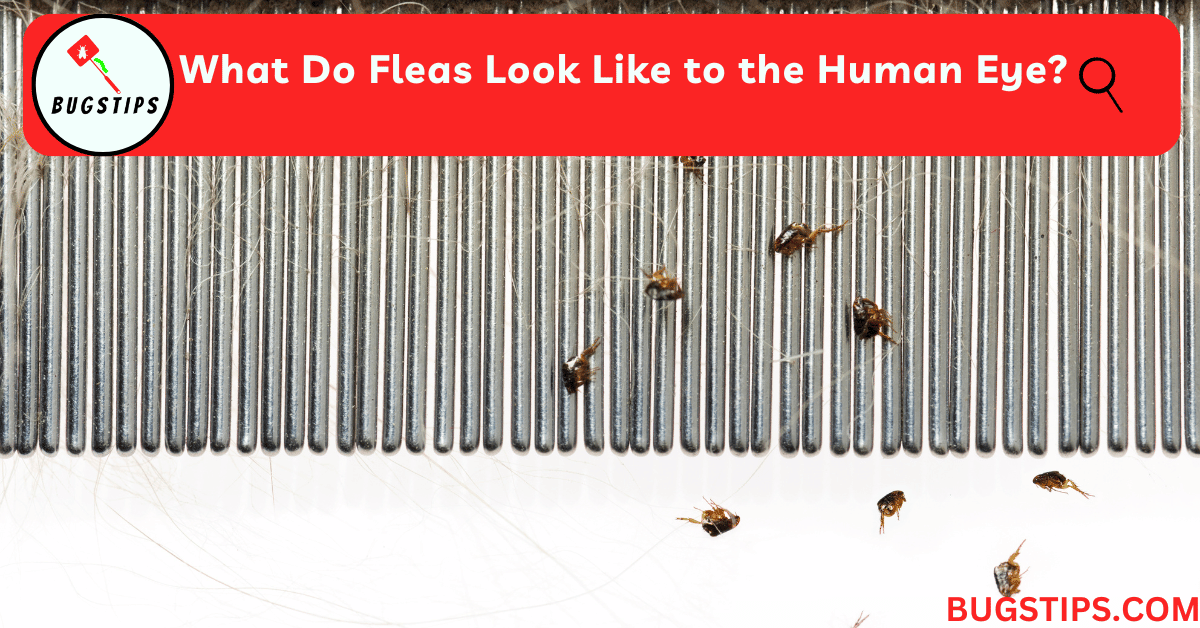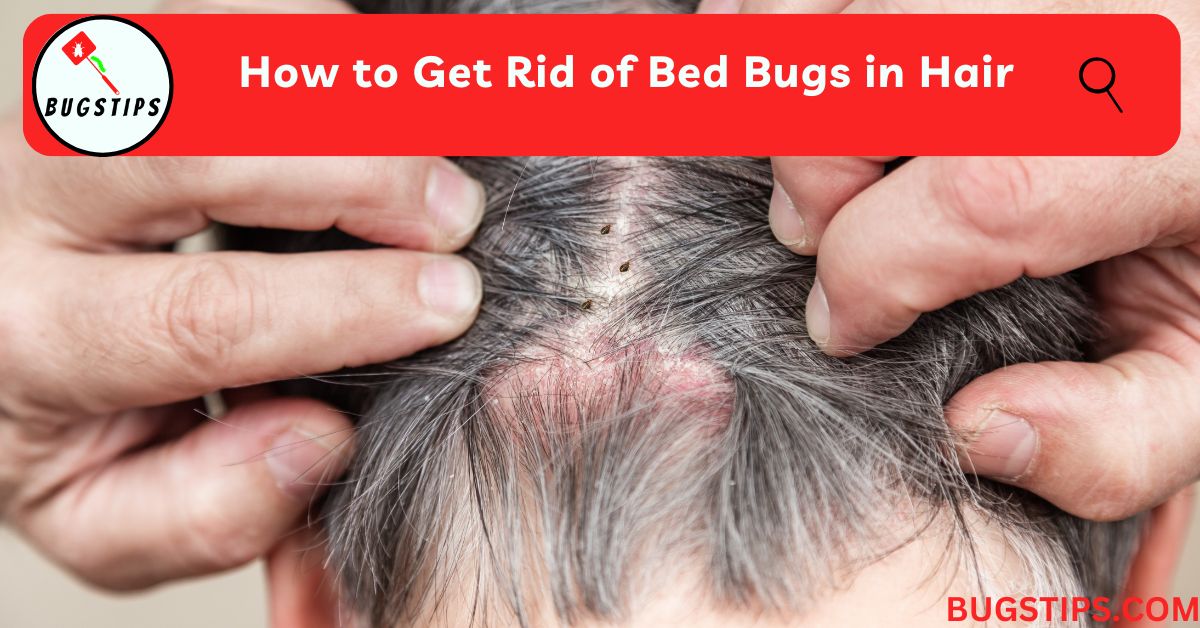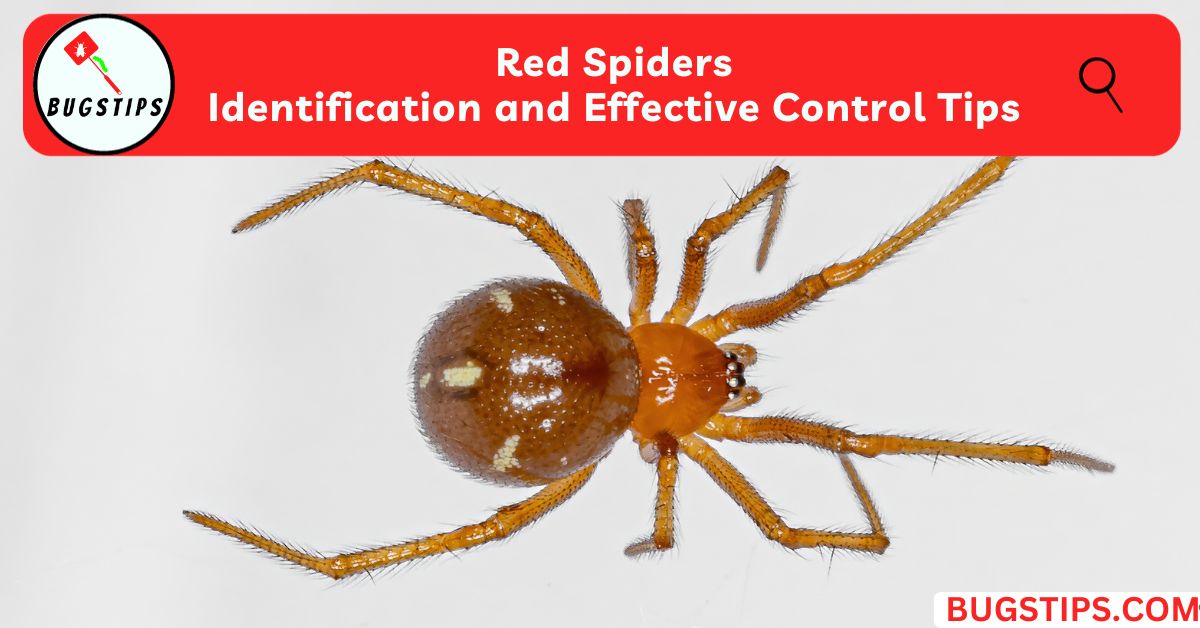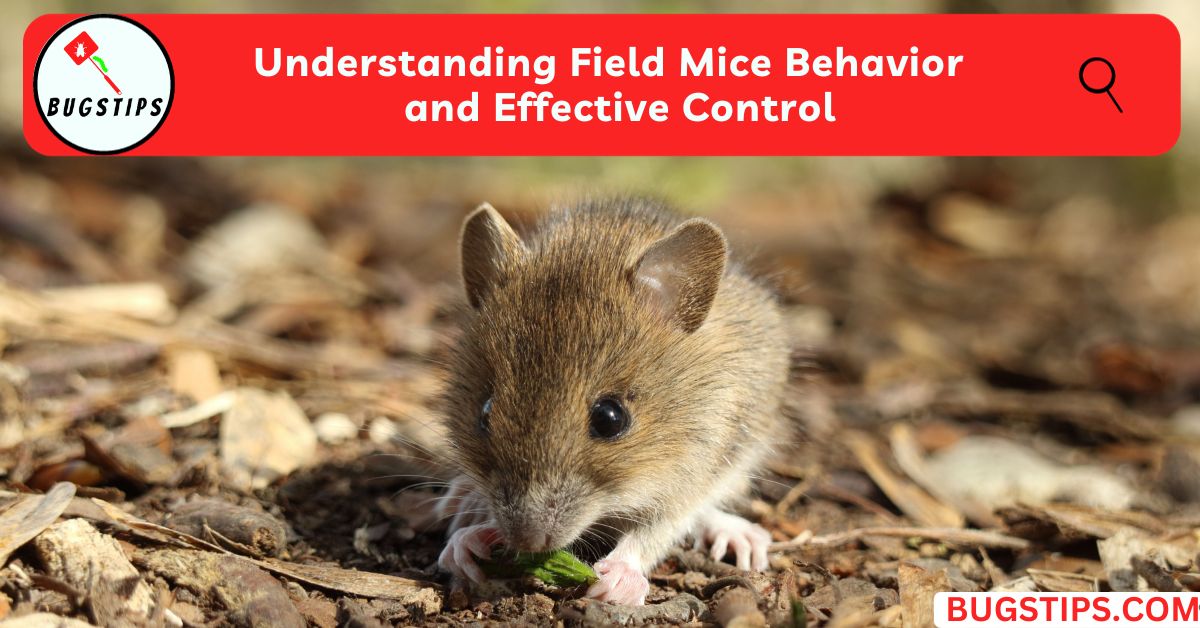This post may contain affiliate links which means as an Amazon Associate, this site may earn a small commission on qualified purchases made through links at no extra cost to you. Learn more on Affiliate Disclosure
Fleas are tiny, wingless insects that feed on the blood of animals and humans. While they may seem like harmless nuisances, flea infestations can cause a range of health problems for both pets and people.
In this article, we’ll explore what fleas look like to the human eye, including their size, shape, and appearance on different surfaces. We’ll also discuss the signs of flea infestations, how to check your pet for fleas, and ways to prevent and get rid of fleas.
So, if you’re wondering “What do fleas look like to the human eye?” or how to protect yourself and your furry friends from these pesky parasites, read on.
What Are Fleas?
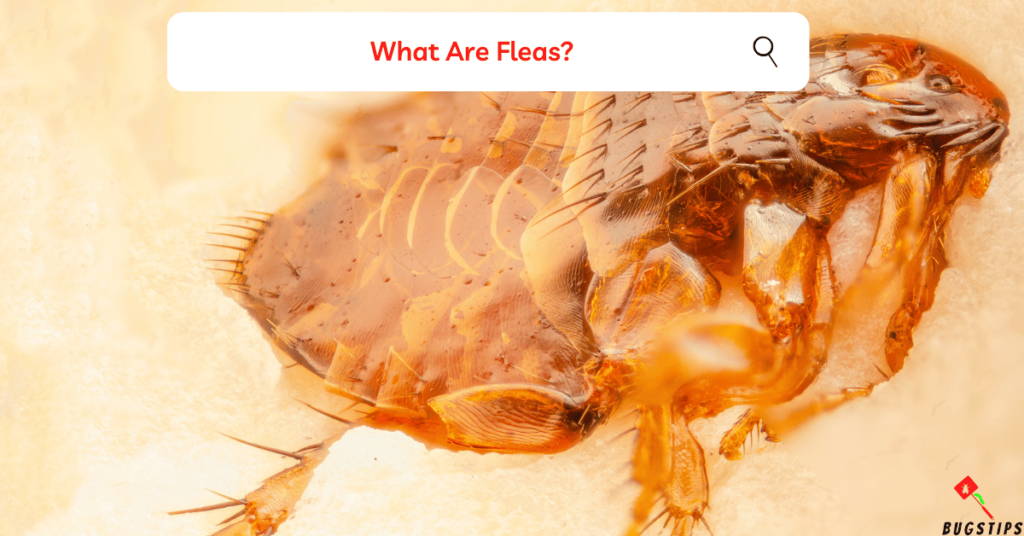
Fleas, those tiny, annoying insects that have been the bane of our existence, are worth exploring in more detail. Fleas are small, parasitic insects that feed on the blood of animals and humans. They belong to the order Siphonaptera.
They are wingless and have flat, narrow body that allows them to move easily through an animal’s fur or human hair. Fleas have three pairs of legs, with the hind legs being longer and stronger, which allows them to jump up to 150 times their own body length to reach their host.
One of the most notable aspects of fleas is their feeding behavior. These crafty insects are bloodsuckers and rely on the blood of their hosts to survive. They possess specially adapted mouthparts designed for piercing the skin and siphoning blood. Fleas have a remarkable ability to detect heat and vibrations, helping them locate suitable hosts to latch onto.
While most commonly associated with our furry friends like dogs and cats, fleas are opportunistic creatures and can infest a wide range of mammals, including humans. They have evolved to thrive in various environments, from cozy pet beds to dense vegetation.
What sets fleas apart from other insects is their resilience and adaptability. They have evolved efficient mechanisms to survive and reproduce in challenging conditions. Fleas are known for their rapid reproductive capabilities, Fleas reproduce quickly, with females laying up to 50 eggs per day, which can hatch in just a few days.
These eggs then develop into larvae, pupae, and eventually adult fleas, ready to continue the cycle.
Related Article – Bed Bugs vs Scabies – 5 Key Differences
Different Kinds of Fleas That Exist
There are more than 2,000 different types of fleas throughout the world, with over 300 types found right here in the United States. Here are the most common fleas
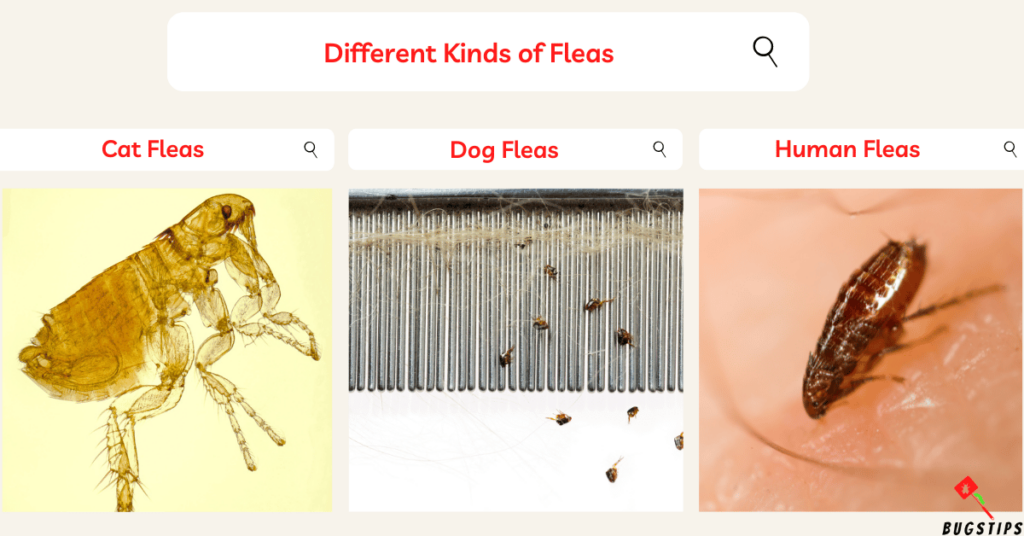
Cat Fleas
Cat fleas (Ctenocephalides felis) are the most common type of flea found on domestic cats and dogs. Despite their name, these fleas are not limited to feline hosts. They are agile jumpers and can easily move from one animal to another, including humans. They can transmit diseases such as tapeworms and cat scratch fever.
Dog Fleas
Dog fleas (Ctenocephalides canis) Similar to cat fleas, dog fleas are commonly found on dogs but can also infest cats and other animals. they can also possess exceptional jumping abilities and cause severe itching and skin irritation in pets.
Human Fleas
As the name suggests, human fleas (Pulex irritans) target humans as their preferred hosts. Although less common in developed areas, they can still be found in certain regions or in situations where sanitation is lacking. Human fleas can also infest other animals such as pigs, dogs, and cats, and can transmit diseases such as typhus and tularemia.
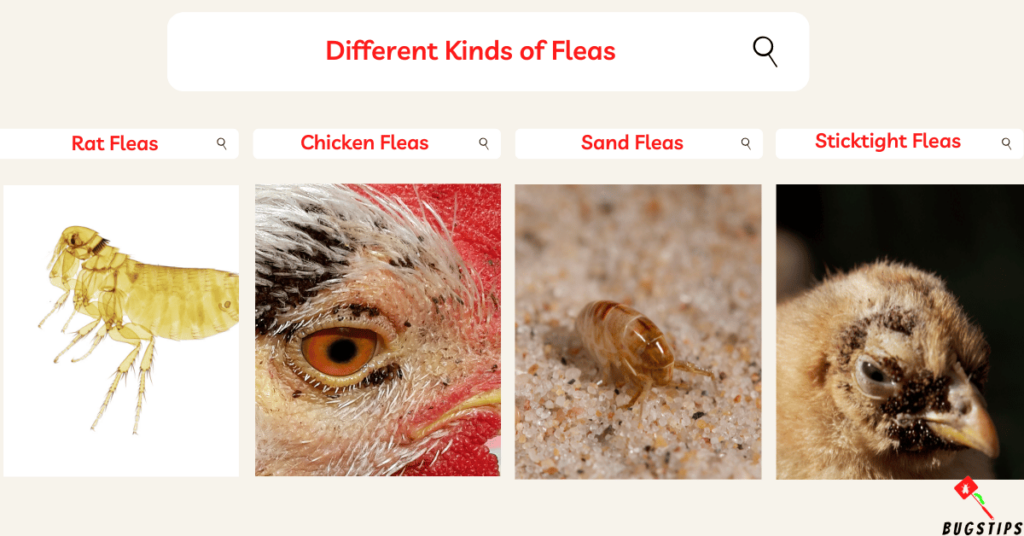
Rat Fleas
There are two main types of rat fleas – the Oriental rat flea (Xenopsylla cheopis) and the Northern rat flea (Nosopsyllus fasciatus). As the names imply, these fleas primarily infest rats. They can transmit diseases like bubonic plague, making them of particular concern. While their primary hosts are rodents, they can also bite humans, potentially posing health risks.
Chicken Fleas
Chicken fleas, such as the European chicken flea (Ceratophyllus gallinae), are specialized parasites that primarily infest poultry, particularly chickens. While they are not a common concern for humans, individuals who work closely with chickens or live in close proximity to poultry may occasionally encounter these fleas.
Sand Fleas
Sand fleas, also known as beach fleas or sand flies, belong to the family Tungidae or Ceratopogonidae. These fleas are commonly found in sandy coastal areas and can cause painful bites. They are known for their ability to burrow into the skin, resulting in discomfort and potential allergic reactions.
Sticktight Fleas
Sticktight fleas (Echidnophaga gallinacea) primarily affect birds, particularly chickens, and other poultry. These fleas can attach themselves firmly to the skin of their hosts, causing irritation and potentially leading to anemia in severe cases. While their focus is on avian hosts, they can occasionally bite humans.
Related Article – 20 Surprising Tiny Bugs in Bed You Need to Know
Flea Appearance: Size, Shape, and Color
Fleas are small insects, measuring between 1/12th to 1/4th of an inch in size. On average, they are about 1/8th of an inch long. Despite their tiny stature, fleas are adept at causing big problems for their hosts.
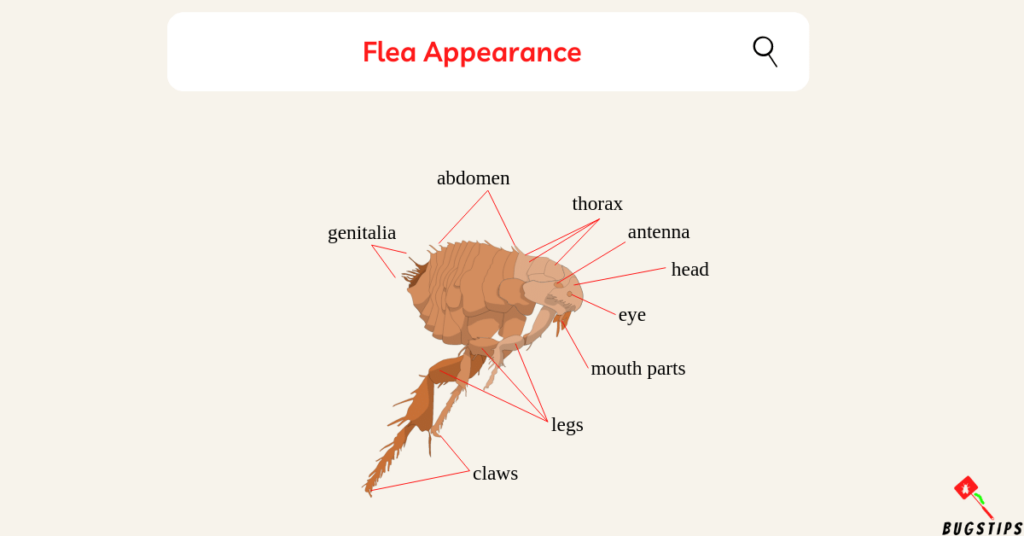
These crafty creatures have distinct, flat, seed-shaped body. This flattened body structure allows them to easily maneuver through the fur, feathers, or hair of their hosts. From a side view, fleas appear narrow, enabling them to swiftly travel across their chosen terrain.
In terms of coloration, fleas exhibit a range of shades. They can be dark brown, black, gray, or dark red-brown. What’s interesting is that fleas have a translucent quality, lending them an amber-like appearance. This characteristic adds to their unique allure, making them distinct from other pests.
As fleas progress through their life cycle, their appearance undergoes changes. Adult fleas are typically black to reddish-brown in color. However, it’s worth noting that young adults who haven’t yet fed on blood are relatively small and black in color. Once they have their first blood meal, they become larger and adopt a reddish-brown hue.
You May Also Like – Bed Bug Shells, Skins, and Casings| Complete Guide
What Do Fleas Look Like to the Human Eye?
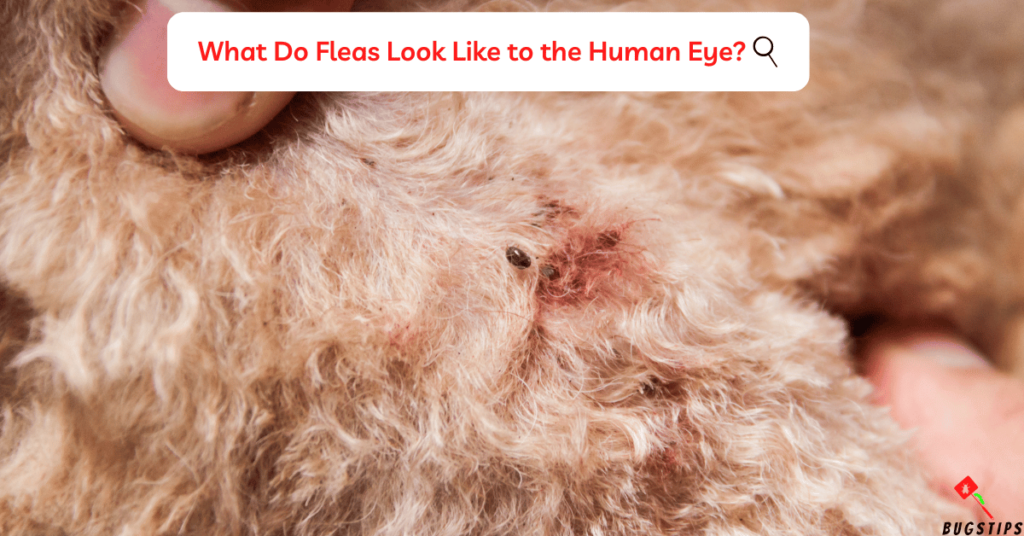
When you look closely at fleas with your own eyes, they appear as tiny, moving specks. They are very small, measuring between 1/12th to 1/4th of an inch in length.
Because they are so tiny, it can be difficult to spot them, especially in hair or fur. But if you pay attention, you can see some important features.
Fleas have flat and elongated bodies that resemble small seeds. This flat shape helps them move easily through the hair or feathers of their hosts. You might notice that fleas come in different colors, such as dark brown, black, gray, or dark red-brown. If you look closely, their bodies might seem somewhat translucent, like amber.
What Do Flea Eggs Look Like to the Human Eye?
Flea eggs, although small and not easily noticeable, do have some distinctive features when observed with the human eye. They are oval-shaped and have a whitish color. These eggs are incredibly tiny, less than half a millimeter in length. While they are visible to the naked eye, their small size makes them quite challenging to spot.
If you were to look at flea eggs under a microscope, they would resemble tiny grains of rice. However, without magnification, they appear as minuscule specks.
When a female flea has recently laid an egg, it might have a shiny and slightly translucent appearance. The color can range from almost clear to creamy white.
What Do Fleas Look Like Under a Microscope?
When you examine fleas under a microscope, a whole new world of intricate details becomes visible. These tiny insects reveal fascinating structures and features that are not easily discernible to the naked eye.
One of the notable observations when studying fleas under a microscope is their segmented bodies. Fleas have three distinct body segments: the head, thorax, and abdomen. The head houses their mouthparts, which are adapted for piercing the skin and sucking blood.
Their thorax is equipped with powerful legs that enable them to jump astonishing distances relative to their size. Meanwhile, the abdomen contains their reproductive organs and digestive system.
Another interesting aspect that can be observed under a microscope is the presence of tiny bristles or hairs covering the body of fleas. These hairs aid in their movement through the fur or feathers of their hosts and contribute to their ability to cling to surfaces.
Furthermore, you might notice the fine, microscopic details of the flea’s exoskeleton. The exoskeleton provides support and protection for the flea’s body. It consists of a hard, chitinous outer layer that helps them withstand various environmental conditions.
Examining fleas under a microscope also allows for a closer look at their mouthparts. These mouthparts are adapted for piercing the skin and siphoning blood from their hosts.
With magnification, you can see the sharp, needle-like structures they use to penetrate the skin and the specialized tube-like structure they employ to extract blood.
By studying fleas under a microscope, scientists have been able to gain a deeper understanding of their anatomy and biology. This knowledge has played a crucial role in developing effective strategies to control and prevent flea infestations.
You’ll Also Like – Computer Mites | 10 Effective Ways to Get Rid of Them
Signs of Fleas
To identify whether you’re dealing with a flea infestation, keep an eye out for the following common signs:
- Excessive Scratching:
- If your pet is constantly scratching, biting, or licking themselves, it could be a sign of flea activity. Fleas cause irritation and itching, leading to these behaviors.
- Red Bumps or Sores:
- Flea bites can result in small, red bumps or sores on the skin. These bites are often accompanied by intense itching. Humans and pets may exhibit these signs.
- Flea Dirt:
- Fleas leave behind tiny black or dark brown specks, often referred to as flea dirt. This “dirt” is actually flea feces, consisting of digested blood. You can spot flea dirt on your pet’s fur, bedding, or in the environment.
- Visible Fleas:
- In severe infestations, you may spot fleas moving on your pet’s fur, especially around its neck, back, and tail regions. Adult fleas are small and quick, so they can be challenging to catch.
- Allergic Reactions:
- Some pets and humans may develop allergic reactions to flea saliva, resulting in redness, swelling, or even severe dermatitis. If you or your pet exhibits signs of an allergic reaction, it could indicate the presence of fleas.
Remember that these signs are not exclusive to fleas alone, as they can also be caused by other pests or skin conditions. However, if you notice multiple signs listed above, it's important to take appropriate measures to address a potential flea infestation.
How to Check Pets for Fleas
Checking your pet for fleas is an important step in detecting and addressing a potential flea infestation.
Here’s a step-by-step guide on how to effectively examine your pet for fleas:
- Find a Well-Lit Area:
- Choose a well-lit area in your home or outdoors where you can comfortably examine your pet. Sufficient lighting will help you spot any signs of fleas or flea dirt.
- Get a Comb or Flea Comb:
- Use a fine-toothed comb or a specifically designed flea comb. These combs have tightly spaced teeth that can trap fleas and flea dirt as you comb through your pet’s fur.
- Start Combing:
- Begin combing your pet’s fur, focusing on areas such as the neck, back, base of the tail, and belly. Comb through the fur slowly and gently, ensuring the comb reaches the skin. Pay close attention to areas where fleas tend to hide, such as warm and protected spots.
- Look for Fleas or Flea Dirt:
- As you comb through your pet’s fur, keep an eye out for live fleas moving on the comb or jumping off your pet. Additionally, check for tiny black or dark brown specks, which could be flea dirt. If you spot any, place them on a damp white paper towel and observe if they leave a reddish stain. This is an indication of flea dirt.
- Check for Flea Bite Signs:
- Examine your pet’s skin for signs of flea bites, such as red bumps, sores, or areas of intense itching. If you notice any of these signs, it could indicate the presence of fleas.
- Be Thorough and Persistent:
- Fleas can be elusive, so it’s important to be thorough and persistent in your examination. Repeat the combing process several times, ensuring you cover the entire body of your pet.
- Consult Your Veterinarian:
- If you suspect your pet has fleas but are unable to find any signs during your examination, it’s recommended to consult your veterinarian. They can provide further guidance, perform a thorough examination, and recommend appropriate flea control measures.
Early detection is key in effectively addressing flea infestations. By regularly checking your pet for fleas and taking preventive measures, you can help keep them protected and comfortable.
How Did I Get Fleas? (Even if You Don’t Have a Pet)
It’s not uncommon to wonder how you ended up with fleas, especially if you don’t own a pet. While pets are a common source of flea infestations, there are other ways you can encounter these pesky critters.
Here are some potential sources or scenarios where humans can get fleas, even without having a pet:
- Wildlife:
- Fleas can hitch a ride on wildlife, such as squirrels, raccoons, or stray cats and dogs. If these animals frequent your yard or neighborhood, it increases the likelihood of fleas being present in the environment.
- Infested Environments:
- Fleas can survive in various environments, including homes, apartments, hotels, or even public spaces like parks. If you spend time in an environment where fleas are present, they can easily latch onto your clothing or belongings and be brought into your home.
- Visiting Infested Areas:
- If you visit areas known to have flea infestations, such as homes with pets, animal shelters, or areas with stray animals, you can inadvertently pick up fleas. Fleas can jump onto your shoes, clothing, or bags and find their way into your living space.
- Secondhand Furniture or Clothing:
- Fleas can hide in used furniture, rugs, or clothing items. If you bring these items into your home without proper inspection and treatment, any hidden fleas can quickly spread.
- Human-to-Human Transfer:
- Although less common, fleas can transfer from person to person through close contact. If you come into contact with someone who has a flea infestation, there’s a small chance that fleas can jump from them onto you.
It's important to note that fleas are resilient pests and can survive for extended periods without a host. They can lie dormant in carpets, upholstery, or bedding until a suitable host, such as a human or animal, becomes available.
Are Fleas Harmful to Humans?
Fleas can be more than just a nuisance to our beloved pets—they can also pose risks to us humans. Flea bites, for instance, can cause discomfort, redness, and itching.
These bites often appear as small, raised welts on the skin and tend to cluster together or form lines. Some individuals may even experience allergic reactions to flea bites, resulting in more severe itching, swelling, and the development of a rash.
Excessive scratching of flea bites can break the skin, increasing the likelihood of secondary infections. Bacteria can enter through these broken areas, leading to infections that may require medical attention.
While it is rare, fleas have the potential to transmit diseases to humans. The bubonic plague, although extremely uncommon in modern times, is one of the diseases historically associated with fleas. Fleas can also transmit other bacterial infections, such as murine typhus or flea-borne spotted fever.
For those who develop an allergy to flea saliva, a condition known as flea allergy dermatitis (FAD) can occur. FAD can cause intense itching, hair loss, and inflammation of the skin.
Seeking medical attention is important if you suspect you or your pet may be experiencing symptoms of FAD.
What Do Flea Bites Look Like?
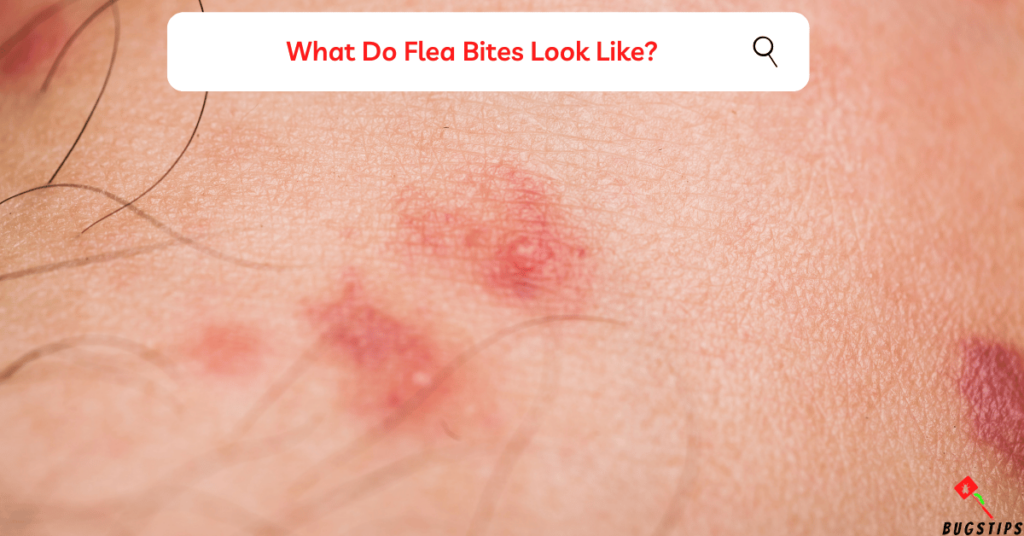
Flea bites are easily distinguishable by their appearance and the accompanying itchiness. Typically, they manifest as small, red bumps on the skin. These bites tend to occur in clusters, often appearing in groups of two or three, forming a trail-like pattern. Unlike mosquito bites, flea bites may have a red halo surrounding the center, and they can appear darker in color.
While flea bites are generally harmless aside from the itch, individuals who are allergic to flea saliva may experience more severe symptoms.
For those who are particularly sensitive, flea bites can cause increased redness, swelling, and discomfort. If you find yourself dealing with the itchiness of flea bites, taking an antihistamine can help alleviate the symptoms.
It’s important to note that the appearance of flea bites can vary depending on several factors. The density of the flea population, the intensity of the flea attack, the type of skin that was bitten, any pathogens carried by the fleas, and the individual’s sensitivity to the substances present in flea saliva can all contribute to the varying appearance of flea bites.
How to Get Rid of Fleas
Dealing with a flea infestation can be frustrating, but there are effective ways to get rid of these persistent pests.
Here are some steps you can take to eliminate fleas from your home:
- Treat Your Pets:
- Start by treating your pets for fleas. Consult with your veterinarian to choose the appropriate flea treatment products for your furry friends. This can include topical treatments, oral medications, or flea collars. Regularly grooming your pets and using flea combs can also help remove fleas and their eggs from their fur.
- Clean and Vacuum:
- Thoroughly clean your home, paying extra attention to areas where fleas are likely to hide. Vacuum carpets, rugs, and upholstery, focusing on areas where your pets spend the most time. Dispose of the vacuum bag or empty the canister outside of your home to prevent fleas from re-infesting your living space.
- Wash Bedding and Linens:
- Wash your pet’s bedding, as well as your own bedding and linens, in hot water. Fleas and their eggs are sensitive to high temperatures, so washing them at a high heat setting can help eliminate them. Dry everything on high heat as well to ensure any remaining fleas are killed.
- Treat Your Home:
- Use flea control products specifically designed for indoor use. There are various options available, such as sprays, foggers, or powders. Follow the instructions carefully when applying these products, paying attention to target areas like carpets, furniture, and baseboards.
- Outdoor Treatment:
- If your pets spend time outdoors, it’s important to address the flea issue in your yard as well. Consider using outdoor flea control products or seeking professional pest control services to treat your outdoor space and prevent re-infestation.
- Regular Maintenance:
- Flea infestations require a consistent effort to completely eradicate. Continue to vacuum regularly, wash bedding, and monitor your pets for any signs of fleas. Regularly treating your pets with preventative flea products can also help prevent future infestations.
- Professional Help: If your flea infestation persists despite your efforts, it may be necessary to seek professional pest control assistance. Pest control experts have the knowledge and tools to effectively eliminate fleas and provide long-term solutions.
Addressing a flea infestation requires patience and persistence. It’s important to treat both your pets and your home simultaneously to achieve the best results.
By following these steps and maintaining good flea prevention practices, you can successfully eliminate fleas and create a flea-free environment for you and your pets.
Final Thoughts
knowing what fleas look like to the human eye is important for identification. Fleas are small, wingless insects with a flat, seed-shaped body and dark coloration. Flea bites appear as small clusters with a red halo.
Take proactive steps to treat your pets, clean your home, and prevent future infestations for a flea-free environment. Stay vigilant and protect yourself and your pets from these troublesome pests.
FAQs
Can a human eye see fleas?
Yes, a human eye can see fleas. Fleas are small insects that are visible to the naked eye. However, due to their tiny size, they can be difficult to spot, especially in the fur or hair of pets or in the environment.
Can fleas make you sick?
Fleas themselves do not typically make humans sick. However, their bites can cause itching, discomfort, and in some cases, allergic reactions. Additionally, fleas can transmit diseases to humans, such as murine typhus and bubonic plague, although these cases are rare.
Can you feel a flea bite?
Yes, you can feel a flea bite. Flea bites often cause itchiness and can be felt as a small, raised bump on the skin. Some people may also experience a burning or stinging sensation at the site of the bite.
How do I know if my pet has fleas?
Common signs that your pet may have fleas include excessive scratching, biting, or licking of the fur, red and irritated skin, the presence of flea dirt (black specks that resemble pepper) on their coat, and the actual sighting of fleas or their eggs.
How often should I treat my pets for fleas?
The frequency of flea treatment for pets depends on various factors, including the severity of the flea infestation in your area and the type of flea control products you use. It is best to consult with your veterinarian to determine the appropriate treatment schedule for your specific pet.
Can fleas survive on humans?
While fleas prefer to infest animals such as cats and dogs, they can also bite and temporarily feed on humans. However, humans are not a suitable long-term host for fleas, and the fleas are unable to complete their life cycle on humans alone.
Resources – (for further reading)
University of California, Berkeley – Introduction to the Siphonaptera
University of Florida – cat flea, dog flea, human flea, oriental rat flea,
Encyclopedia Britannica – Flea | Definition, Size, & Natural History, Rat flea, European chicken flea, Sticktight flea
University of Minnesota – Fleas

